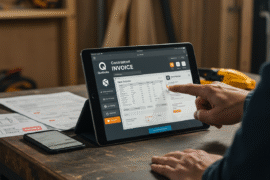This article may contain references to products or services from one or more of our advertisers or partners. We may receive compensation when you click on links to those products or services. Nonetheless, our opinions are our own.
The information presented in this article is accurate to the best of our knowledge at the time of publication. However, information is subject to change, and no guarantees are made about the continued accuracy or completeness of this content after its publication date.
- A Comprehensive Look at the Best Accounts to Open for a Baby
- High-Yield Savings Accounts
- Custodial Accounts (UGMA/UTMA)
- 529 College Savings Plans
- Roth IRA for Minors
- Certificates of Deposit (CDs)
- Education Savings Accounts (ESA)
- Children’s Checking Accounts
- Investment Brokerage Accounts for Minors
- Health Savings Accounts (HSA)
- Choosing Between Online and Traditional Banks
- Frequently Asked Questions
- Conclusion
- Recommended Reads
A Comprehensive Look at the Best Accounts to Open for a Baby
Creating a strong financial future begins early. Setting up an account tailored to a child’s needs can nurture long-term saving habits, encourage investment awareness, and provide future security. Below is a detailed examination of account types designed to benefit a child’s development through financial preparation.
High-Yield Savings Accounts
High-yield savings accounts are a practical and secure starting point for families wishing to grow funds steadily over time. These accounts offer interest rates superior to traditional savings accounts, making them attractive for early-stage saving.
Benefits include:
- Higher interest rates that compound earnings gradually
- Immediate access to funds, offering flexibility for unexpected needs
- Often minimal to no balance requirements, making them accessible to all income levels
This type of account balances accessibility with the benefits of compounding growth, allowing savings to accumulate consistently over the years.
Custodial Accounts (UGMA/UTMA)
Custodial accounts under the Uniform Gifts to Minors Act (UGMA) and the Uniform Transfers to Minors Act (UTMA) provide a means to invest on behalf of a child until they reach the age of majority. These accounts can hold a wide range of assets, including stocks, bonds, and cash.
Advantages include:
- Favorable tax treatment on investment earnings
- Flexibility to include various types of investments
- No restrictions on how the child may use the funds once they assume control
These accounts function as a bridge, enabling long-term growth while preserving flexibility for the child’s future needs, whether educational, personal, or otherwise.
529 College Savings Plans
Structured to help cover educational expenses, 529 plans offer tax-deferred growth and tax-free withdrawals when funds are used for qualifying education costs.
Notable features:
- Federal tax advantages on earnings and withdrawals
- Investment portfolios that can be customized based on risk tolerance and educational timelines
- Broad applicability across institutions including universities, community colleges, and some international schools
- No age restrictions on contributions, allowing planning to begin at any stage
By channeling funds into a 529 plan early, families can address rising education costs more effectively through disciplined, long-term saving.
Roth IRA for Minors
For children with earned income from jobs such as babysitting, modeling, or other part-time work, a Roth IRA presents an opportunity to begin retirement savings with powerful tax benefits.
Benefits include:
- Tax-free withdrawals in retirement if conditions are met
- Early exposure to the principles of investment and compounding
- The ability to contribute small amounts that grow significantly over time
Though often overlooked, this account type fosters early financial literacy and positions the child to benefit from decades of untaxed growth.
Voted "Best Overall Budgeting App" by Forbes and WSJ
Monarch Money helps you budget, track spending, set goals, and plan your financial future—all in one app.
Get 50% OFF your first year with code MONARCHVIP
Certificates of Deposit (CDs)
Certificates of deposit offer a fixed interest rate in exchange for locking away funds for a defined term, making them suitable for milestone-driven savings.
Why CDs stand out:
- Guaranteed return through fixed interest rates
- Structured savings with minimal risk
- Encourages long-term planning by discouraging premature withdrawals
CDs are an ideal option for parents who want to earmark funds for specific future uses while avoiding market exposure.
Education Savings Accounts (ESA)
Education Savings Accounts offer another vehicle for tax-advantaged saving with broad applicability for academic expenses.
ESA benefits:
- Can be used for K-12 education costs as well as higher education
- Tax-deferred growth with tax-free withdrawals for qualified education expenses
- Greater flexibility in investment choices, depending on the provider
This account suits families seeking a savings tool that supports multiple educational stages, from early schooling through to university.
Children’s Checking Accounts
Introducing a child to money management through a basic checking account builds skills that can serve them throughout life. These accounts are typically designed with age-appropriate features.
Advantages include:
- No monthly fees and low balance requirements
- Parental oversight through transaction alerts or spending limits
- Some accounts offer interest or rewards for saving habits
- Mobile apps with educational tools and interactive budgeting features
Establishing a child’s financial habits early through routine access to spending and saving tools can yield lasting benefits.
Investment Brokerage Accounts for Minors
For families aiming to move beyond savings and pursue long-term wealth building, a custodial investment brokerage account allows assets to grow with market potential.
Highlights:
- Access to a wide range of assets, including ETFs, mutual funds, and individual stocks
- Higher return potential compared to traditional savings methods
- A hands-on educational opportunity in investment strategy as the child matures
This account type emphasizes wealth accumulation and financial literacy through real-world exposure to investing principles.
Health Savings Accounts (HSA)
Though not typically opened in a child’s name, an HSA can still play a role in planning for future medical costs, particularly if the family is enrolled in a high-deductible health plan.
Attributes:
- Contributions reduce taxable income
- Withdrawals for qualifying medical expenses are tax-free
- Funds may be invested for potential growth over time
This tool supports long-term healthcare planning, providing peace of mind in managing future expenses.
Choosing Between Online and Traditional Banks
The institution selected to house a child’s account matters as much as the account type itself. Online banks often provide lower fees and more competitive interest rates, while traditional banks offer the benefit of physical locations and personal service.
Online banks often provide:
- Streamlined, digital experiences with easy monitoring
- Lower maintenance fees
- Higher interest rates, particularly for savings accounts
Traditional banks may offer:
- In-person consultations and educational programs
- Familiarity and local presence
- Structured transition to more mature financial products
Each approach has its merits, and the choice depends on the family’s preferences for convenience, relationship-building, and long-term service.
Frequently Asked Questions
What is the benefit of a custodial account for a child?
Custodial accounts allow adults to invest in a child’s name with tax advantages and flexibility for a wide range of investments until the child reaches adulthood.
How does a 529 plan help with college savings?
It offers tax-deferred growth and tax-free withdrawals for qualified education expenses, helping families manage education costs efficiently.
Can minors contribute to a Roth IRA?
Yes, minors with earned income can contribute to a Roth IRA, allowing early savings for retirement with tax-free growth.
What features should parents look for in a child’s checking account?
Look for no fees, parental controls, educational tools, and possibly interest or rewards to encourage saving.
Conclusion
Choosing the right financial accounts for a child lays the foundation for saving, investing, and financial literacy. Each option offers unique benefits, from secure savings to investment growth and tax advantages. Selecting accounts aligned with family goals and values helps build a stable financial future for the child.

Reviewed and edited by Albert Fang.
See a typo or want to suggest an edit/revision to the content? Use the contact us form to provide feedback.
At FangWallet, we value editorial integrity and open collaboration in curating quality content for readers to enjoy. Much appreciated for the assist.
Did you like our article and find it insightful? We encourage sharing the article link with family and friends to benefit as well - better yet, sharing on social media. Thank you for the support! 🍉
Article Title: Top Accounts to Start for Your Baby’s Future
https://fangwallet.com/2025/05/26/baby-savings-account/The FangWallet Promise
FangWallet is an editorially independent resource - founded on breaking down challenging financial concepts for anyone to understand since 2014. While we adhere to editorial integrity, note that this post may contain references to products from our partners.
The FangWallet promise is always to have your best interest in mind and be transparent and honest about the financial picture.
Become an Insider

Subscribe to get a free daily budget planner printable to help get your money on track!
Make passive money the right way. No spam.
Editorial Disclaimer: The editorial content on this page is not provided by any of the companies mentioned. The opinions expressed here are the author's alone.
The content of this website is for informational purposes only and does not represent investment advice, or an offer or solicitation to buy or sell any security, investment, or product. Investors are encouraged to do their own due diligence, and, if necessary, consult professional advising before making any investment decisions. Investing involves a high degree of risk, and financial losses may occur including the potential loss of principal.
Source Citation References:
+ Inspo
There are no additional citations or references to note for this article at this time.












































